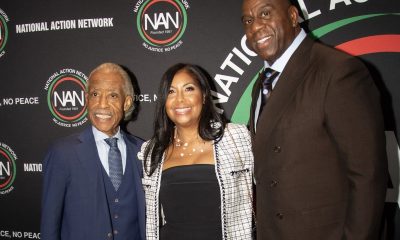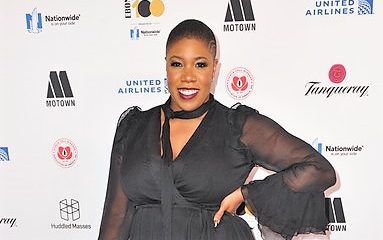Political Science
Musicians, Moguls, Media Partner to Reduce High School Drop Out Rate
For years, educators have been ringing the alarm about the vast number of students dropping out of U.S. high schools.
With nearly one in three, or 1.3 million, U.S. high school students failing to graduate each year, educators would often lobby parents, businesses, and local and federal government, for more support in keeping kids in school.
Recently, such calls for help may have been answered in the form of several high-profile initiatives that leverage corporations, charities and celebrities in campaigns aimed at reducing the drop out rates.
The campaigns move beyond the strategies used in government stay in school programs, or the after school TV specials popular in the 1970s and 1980s in that the new education campaigns utilize celebrities, the Internet and social networking to funnel its education messages to students.
This fall in Los Angeles, the Bill & Melinda Gates Foundation, Viacom and other corporations, marked the first day of the 2009-2010 school year by announcing the launch of the “Get Schooled: You Have The Right” campaign, a five-year initiative established to identify and utilize newer approaches to reducing high school and college drop out rates.
“
The education crisis is damaging our ability to compete in the global economy,” said billionaire Bill Gates, whose Gates Foundation has invested $2 billion in educational programs since 2000. “We need to do more to engage all Americans – from policymakers and corporate leaders to families and young people – in our effort to support students in completing their education and achieving their dreams.
In an example of the extraordinary resources and the star power The Gates Foundation and Viacom could bring to the campaign, the roll out of “Get Schooled” included a red carpet of celebrities, a news conference hosted by Stephen Colbert (“The Colbert Report”), and a block party and concert that featured performances by pop singers Monica and Jesse McCartney.
The “Get Schooled” campaign also made use of the Internet in reaching out to students. For example, the Get Schooled effort includes a Facebook page and Twitter feeds, and a website that offers students information on scholarships and careers.
As part of the “The Get Schooled” launch, a 30-minute documentary was broadcasted simultaneously on several of Viacom’s youth-targeted U.S. television networks, including BET, MTV, VH1 and Nickelodeon.
The documentary featured President Barack Obama, pop star Kelly Clarkson, NBA all-star LeBron James and other professionals discussing how education has shaped their personal lives and professional careers. The broadcast was the most watched cable program that day, drawing about 13 million viewers.
“We are committed to raising awareness and, even more importantly, to converting that awareness into action,” Viacom President and CEO Philippe Dauman said of the effort.
Dauman also said Viacom could also create storylines around education for some of its television programming when appropriate.
Public service campaigns aren’t new to Viacom, who in 2004 launched the Know HIV/AIDS campaign that promoted HIV testing using rapper Common and other entertainers in ads. For about a decade, BET has continued its “Rap it Up” media campaign that informs youth about HIV/AIDS information and resources.
Where Hip-hop and Education Meet
In New York, as way to keep students motivated at the school year’s quarter mark, the non-profit Entertainers 4 Education Alliance (E4EA), New York’s HOT 97 radio station, Coca-Cola and other corporate sponsors recently held a “Stay in School” pep rally.
The pep rally, which was part of New York’s “I Will Graduate Day,” featured music, educational messages and celebrity appearances. Such celebrities as R&B singer Keri Hilson, rappers Jim Jones and Juelz Santana, and hip-hop mogul Russell Simmons were speakers at the event.
Ultimately, the rally served as a platform for students to receive educational messages from public figures they admire and can relate to.
“Staying in school is very, very important and beneficial to everything you do in life,” said Juelz Santana, noting how education was useful to him in learning a movie script recently. “You have to remember that this is a music business. You got math, you got contracts, you got a bunch of things not even required for being here on stage but we still have to make sure those things are right. Stay in school, not for me, but for yourself because it’s only going to help you in the future.
“This was the fourth year the E4EA held the pep rally. Tonya Lewis, organization’s co-founder and Executive Director, says idea for the rally was spawned after getting positive feedback from principals and teachers about the class visits some artists were making to schools.
Lewis, a former publicist for Roc-A-Fella Records and a founder of the publicity firm E.A.R.S. Entertainment, says the organization wanted to take the education outreach further by launching the “I Will Graduate” campaign last year, which included the release of a public service announcement featuring entertainers Bow Wow, Donnie Klang of MTV’s “Making the Band” fame and rappers Jim Jones and Juelz Santana that was posted to youtube on other web sites.
“We know that pop culture is dominated right now,” says Lewis, who went to public school in Brooklyn. “We think the message does get across more effective by utilizing those people those young people admire.”
The effort has caught on, with the New York City’s mayor’s office declaring October 27th “I Will Graduate Day” across the city.
Targeting the Messages
The hip-hop inspired stay in school messages may resonate particularly among black and Hispanic youth, who typically have lower graduation rates than white or Asian students. In New York, black and Hispanic students have the highest drop out rate than any state in the nation, according to the National Centers for Educational Schools Statistics.
While the numbers are bleak, there have been improvements. Politicians and educators have pointed to higher testing standards, the adoption of charter schools and other reforms as a factor in the recent gains in closing the gap in graduation rates among blacks and Hispanics.
But despite the gains, white students in New York, for example, are still graduating high school at 20 percentage points higher than black students, and about 23 percentage points higher than Hispanic students, according to the New York State Education Department.
In California, black students during the 2007-2008 school year had a 41.3 drop out rate, and Hispanics a 30.3% drop out rate. That compares with a 15.2 percent dropout rate among white students and a 10 percent drop out rate among Asians.
To address the crisis, lawmakers recently introduced legislation in Congress that would supply school districts with grants to help turn around their lowest-performing high schools. The bill will also require schools to provide students with financial aid options and other college-related information.
The alarming statistics makes the delivery method of the message just as important.
“It’s very effective coming from high profile individuals” says Lewis, with the E4A. “We know our young people identify with people in entertainment cause these people they inspire to be.”
Tainting the Message?
Viacom and some hip-hop artists have been criticized over the years for releasing videos and lyrics that depict violence, promote misogyny and are less substantive than the early days of hip-hop. Some also questioned whether using artists with personal and legal challenges would undermine the message.
Cognizant of such conflicts, Lewis says the E4EA has turned down requests from certain artists to perform or speak at the rallies because of lyrics that might not be appropriate for students, or if they have personal issues that might taint the message.
“There are times you can not use somebody,” she says. “We try to use positive artists that don’t have bad press or negative issues going.
Measures of Success
There’s little evidence to suggest media campaigns targeting youth are effective in changing behavior or thinking. However, one study published in the journal Pediatrics in 2003 by the non-profit RAND Corporation does suggest television has some advantages over traditional methods of delivering important messages to young people.
RAND researchers surveyed about 500 teens who had watched an episode of the television sitcom “Friends,” whose plot included a pregnancy caused by a condom failure. The study found that most viewers remembered that the episode contained information about condom effectiveness. Teens were also twice as likely to remember the message when they watched or discussed the episode with a parent.
The Truth anti-smoking campaign, which used dramatic images to warn of the dangers of smoking, was cited in a 2002 study published in the American Journal of Public Health that reported smoking among students fell from 25.3% to 18.0% between 1999 and 2002. The study attributes 2 % of the overall decline in youth smoking to the images and messages of the Truth campaign.
For Lewis, at the E4EA, the educators and students offer the best evidence of the program’s effectiveness. Lewis says she once received a letter from the principal of a school that participated in an E4EA rally. In the letter, the principal shared an anecdote about a 16 year-old student, who had some challenges in school, who made a pledged to graduate after attending the ral ly.
“It was heartwarming,” Lewis says. “Those are things let you know are making a difference.”










